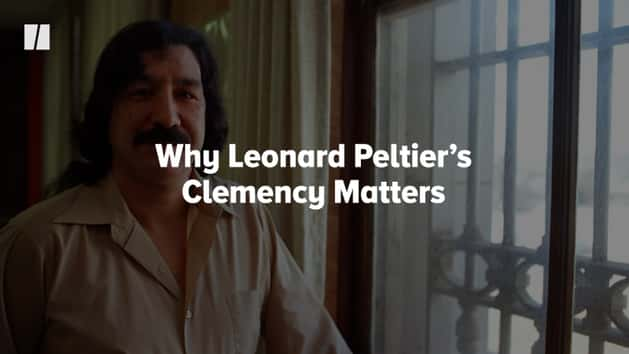


When artist Jeffrey Gibson’s work lit up the 60th Venice Biennale last spring, it became a vivid reflection of his place in America’s colorful history and the forces that shaped it.
Gibson made history as the first Native American artist to represent the United States with a solo show at the global art spectacle in Venice, which is often dubbed “the Olympics of the art world.” He is a member of the Mississippi Band of Choctaw Indians and is also of Cherokee descent.
“I think I really felt, ’This is the moment that the art world wants this,” Gibson told HuffPost at a preview of the art exhibit. “This is the moment that America wants this.”
His exhibition, “the space in which to place me,” will now make its U.S. debut at Los Angeles’ Broad Museum on Saturday.
The exhibit, which includes paintings, sculptures, flags, murals and video, situates Gibson’s personal experience within a broader historical narrative, blending prismatic color and traditional Native craftsmanship with bold geometric texts that reference queer, Native American and U.S. histories.

Words from the Declaration of Independence and the Indian Citizenship Act of 1924 are in conversation with rapturous lyrics from Nina Simone and Roberta Flack, excerpts from Martin Luther King Jr.’s speeches and letters between founding fathers George Washington and James Madison. Meanwhile, garments with intricate beading and fringe offer an ode to Native Americans’ diverse powwow culture.
Through his work, Gibson reveals his radical form of patriotism; it confronts the nation’s challenges with joy and optimism.
But as his celebration of history and color makes its way to the United States, American values are being redefined in increasingly narrow terms.
“American values for me are representative of a vibrant community within the context of what I could critique about American culture.”
- Jeffrey Gibson
In an effort to reshape America to his own vision, President Donald Trump and his administration have begun targeting the country’s top cultural institutions.
After the Trump administration proposed eliminating the National Endowment for the Arts outright, the agency changed its application to bar recipients from using funds to promote “diversity, equity and inclusion” or “gender ideology.” The NEA then canceled or withdrew millions of dollars of grants for artists and arts organizations earlier this month, citing a shift in priorities.
Those cuts included a $50,000 award to the Massachusetts Museum of Contemporary Art (MASS MoCA) approved last year to support Gibson’s installation, “POWER FULL BECAUSE WE’RE DIFFERENT.” The exhibit is expected to remain on view as scheduled through August 2026.

In an executive order titled “Restoring Truth and Sanity to American History” in late March, Trump also accused the Smithsonian Institute of coming “under the influence of a divisive, race-centered ideology” and “replacing objective facts with a distorted narrative driven by ideology rather than truth.”
Gibson, who has worked with several of the Smithsonian’s 20-plus institutions, reflected on the shifting cultural landscape in an interview with the Los Angeles Times earlier this month. “To me, it’s almost whiplash going from Venice to what’s going on at the Smithsonian now,” he said.
The president’s bid to take control of the nation’s museums and theaters is unnerving many Americans as well. Last month, a Reuters/Ipsos poll revealed 66% of people surveyed across party lines disagree with his interventions.
But as the U.S. Pavilion for the 2026 Venice Biennale prepares to open, the Trump administration seems eager to impose its new priorities. When the application portal opened this month, it introduced new guidelines requiring applying artists to represent “American values” and “American exceptionalism.”
Gibson, whose work engages in both a critique and celebration of American culture, has long defined American values in his own terms.
“American values for me are representative of a vibrant community within the context of what I could critique about American culture,” he told HuffPost. “I grew up believing that that’s what America was about. America was about this diversity. America was about celebrating and allowing for people to have their own free choice, their own free voice, and that you were putting it into a dialogue that was, in unspoken terms, being managed as a civil conversation. So that’s the American value that I’ve clung to my entire life.”

The effort to cage in creative expression and enforce a one-dimensional image of America is something Gibson resists in his work and in his ethos.
At The Broad, visitors are greeted with an exquisitely beaded bird sculpture titled “if there is no struggle there is no progress,” named after a line in a 1857 speech by abolitionist Frederick Douglass. It’s a powerful reminder that growth has always come with tension.
Looking beyond the present moment, Gibson’s work envisions a new chapter of history filled with creativity, rebellion and abundance.
“There’s all kinds of resistance,” he said, reflecting on his role in shaping a different future. “I have had to come to terms with truly believing that my artwork is my contribution to enabling a different form of existing.”
He added, “What happens next is about maintaining a sense of self in the most stable environment we can find. But we’re not being offered the most stable environment to be humane and civil to each other. That’s not what’s happening right now. So we have to find a way to craft that environment for each other and for ourselves.”
As a professor, Gibson said that he’s seen generations of students eager to collapse boundaries and embrace a future of progress and engagement.
“I think the thing you really want to know is that you always want people to know they have choices,” he told reporters at the press preview at The Broad. “Even in the most dire situations. Once people believe they don’t have a choice anymore, that’s really the beginning of the end.”
Jeffrey Gibson’s “the space in which to place me” runs through Sept. 28 at The Broad Museum in Los Angeles. For more information, visit here.

